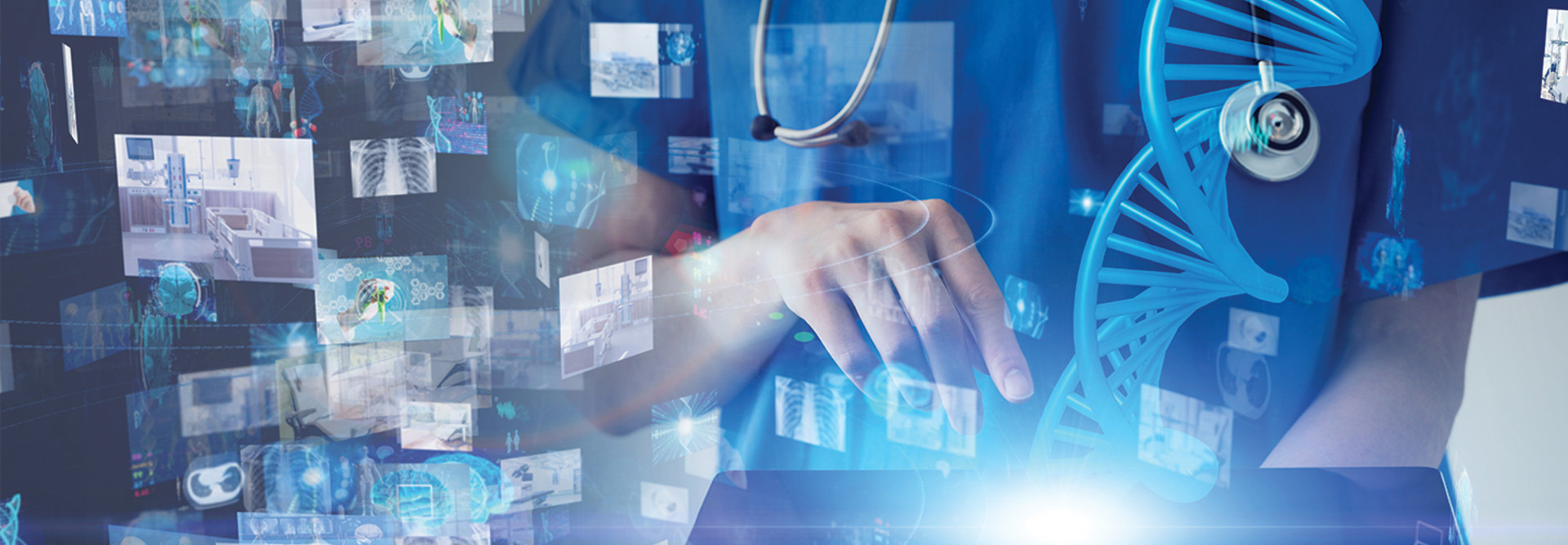AI Extends Capabilities of Hospital Staff
An interesting facet of AI is that the technology, in most cases, serves as an extension of its team, augmenting the capabilities of experts to be more efficient. The advanced technology does not replace human expertise, as human feedback is a necessary part of the AI relationship. Examples of the growing relationship between AI and subject matter experts are evident in recent medical research.
Certain types of AI have been trained to “understand” images. These systems have shown to be as good as or better than trained physicians at detecting tuberculosis in chest X-rays or picking out cancerous cells in a large microscopy image. Computers do not suffer from fatigue or errors in the same way a human may after a long day of examining images. Even further, certain AI programs can predict adverse cardiovascular events at a more accurate rate than a human using the American College of Cardiology/American Heart Association guidelines.
However, it must be understood that in every one of these cases, it was human expertise that showed the machines what they needed to learn and now works with them after their data analysis is complete. Even the most sophisticated airplane with autopilot still needs a real pilot’s judgment in the cockpit.
Collaboration with AI has also prevented costly compliance violations such as health data breaches, drug theft or fraud. Compliance analytics leveraging AI allow hospitals to reduce organizational risk by auditing activities across the enterprise at scale and proactively identifying risky behaviors or sloppy practices.
Focus on What’s Important: Your Patients
One of the attractions of adopting AI is that it has the ability to quickly and accurately complete tasks that previously required extensive manual labor, and where human error always needed to be taken into account. AI has the ability to provide clinicians with information to improve patient care and assist with rapid diagnoses that can be critical to positive patient outcomes. For example, various academic medical centers have been able to use AI to predict when patients are at risk for sepsis or a coming low-pressure event during surgery.
AI also can have a significant impact on streamlining compliance investigation workflows by finding anomalous activity within any of the 60 million electronic health record queries that occur each month in the average-sized hospital. This is beyond the reach of even a superhuman privacy officer. To manually achieve this same goal, a privacy officer would have to review more than 6 million EHR queries — almost 300,000 per hour — every single day. This same level of security would require a health system to employ more than 23,000 professionals whose sole focus would be to examine access to patient data — all day, every day.
However, with AI, only a small team of compliance officers is required to review EHR queries because the AI does the heavy lifting, presenting only the most questionable cases for human review.
As healthcare organizations continue to grapple with the ongoing COVID-19 pandemic, increasing efficiency and being able to do more with less will be crucial, as organizations will have to work toward achieving their goals in a resource-constrained environment.
RELATED: See how surgeons use VR technology to train and adapt.
Look for Ways to Reduce Risk Across the Organization
The vast amount of health data that flows through a hospital provides an incredible opportunity for AI to help reduce risk and refocus human attention. Whether it’s within the EHR or other clinical applications, AI has the potential to improve clinical diagnoses, detect medication administration errors and prevent privacy violations. When used by hospital leadership, AI-driven analytics can make sense of data trends and patterns, recognizing potential problems and preventing incidents that pose a threat to the organization, workforce and patients alike.
AI is an efficient and cost-effective way for healthcare organizations to harness their current resources, ensure their organization’s policies and procedures are being enforced and refocus human capital on the most important tasks. Health systems that use the power of artificial intelligence are able to review 100 percent of events that take place within their EHR and associated applications. This not only detects and prevents bad behavior, but also frees up people in a resource-strapped environment to focus on larger organizational priorities without having to sacrifice important tasks that can easily be done by artificial intelligence.
This additional layer of protection aids organizations in complying with regulations and ensuring patient safety, while also strengthening patient and employee trust within their organization and the communities they serve.












